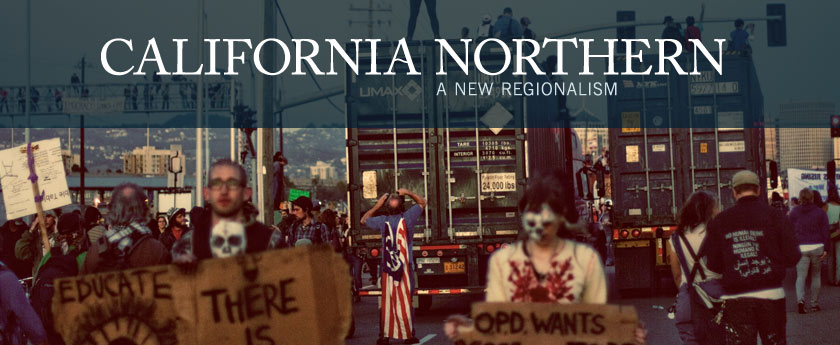A Culture of Dissent
By Ryan Miller
On January 28, 2012, my wife’s maternal grandmother lay dying in a senior care facility in Sacramento. At the same time, my four-year-old daughter suddenly and spectacularly revealed she had caught the stomach flu, so while the rest of the family took turns sitting at Grandma’s bedside, holding her fluttering hands, I sat on my in-laws’ couch across town and stroked my child’s hair as she heaved her dinner into the dog’s battered water bowl I’d co-opted for vomit duty.
An early evening followed the spitting rain coming down from the gray sky while I wiped my girl’s chin with a washcloth and stared, numb, at the eighth (ninth? tenth?) straight hour of animated woodland creatures frolicking across the TV. Unable to take another round with a mystery-solving hedgehog or magic school bus, I thumbed the remote control.
The bright, hand-drawn characters yielded the screen to masses of people roaming yellow-lit streets. The news program I’d randomly stumbled onto showed patches of sidewalk obscured by clouds of smoke, maybe tear gas. Running figures loomed from and vanished into shadows, and the whole hazy scene was lit again and again with flashes. A CBS reporter later noted that police had lobbed what “appeared to be a stun grenade.”
The jump from clean-lined children’s shows to messy reality was particularly jarring. My daughter’s stomach launched a fresh rebellion, and though I reluctantly searched for the cartoons again to keep her mind off her troubled and roiling gut, my own thoughts were stuck on one word that framed all the action in those chaotic streets: Oakland.
A Reuters story from a couple days later, reporting that about four hundred people were arrested in one day and night, singled the city out: “Oakland has become an unlikely flashpoint of the national ‘Occupy’ protests against economic inequality that began last year in New York’s financial district and have spread to dozens of cities across the country.”
Let’s get this out of the way: the movement known as Occupy started in New York City, amid its skyscrapers and stock markets. On September 17, 2011, Occupy Wall Street organizers and promoters launched what quickly became a global phenomenon.
As people were literally occupying the financial district—eating, sleeping, waving signs, and getting pepper-sprayed—a Democracy Now! interview captured the array of causes drawing people to the encampment: “disapproval with the system,” “the labor movement,” a need for “restrictions on these lobbyists that buy out campaigns,” “wars that we shouldn’t be fighting,” an alternative to “a sort of casino capitalism,” mortgage problems, and more. New York appeared to be the locus of a movement that was starting to address the defining concerns of our time—but it wasn’t alone.
San Franciscans launched their own Occupy efforts the same day New Yorkers did, gathering at the Federal Reserve Bank’s West Coast headquarters. The numbers were modest though, and national news reports stayed focused on New York.
Gradually, however, the movement’s center of gravity started to tilt west. Protesters in San Francisco maintained a constant presence near the Ferry Building through the fall. Oakland officially kicked off its own occupation in October. According to participants in that encampment, an almost idyllic community emerged in Frank Ogawa Plaza near Oakland’s City Hall.
This is an excerpt of “A Culture of Dissent”

